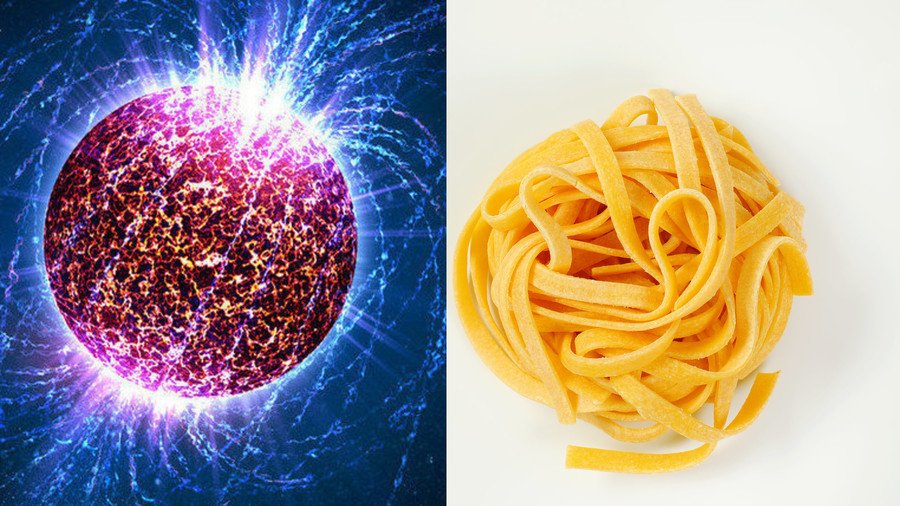‘Nuclear pasta' could be strongest material in the universe – study

Theoretical physics has generated many theories over the past century but new research into so-called ‘nuclear pasta’ – highly dense atomic material found in dead stars – shows that science is quickly 'spirali' out of control.
Researchers at the Indiana University Bloomington who study incredibly dense objects like neutron stars, formed when dying stars explode, are now theorizing that the gravitational force beneath the outer ‘crust’ of these celestial objects is so immense that it creates atomic structures that can only be described as “nuclear pasta.”

According to their research, just one kilometer below the crust of a neutron star, a dense mixture of neutrons and protons forms structures akin to pasta in all sorts of (theoretical) shapes and sizes, including but not limited to: blobs, tubes and sheets, like their real-world comparators gnocchi, spaghetti and lasagna respectively.
In addition, the scientists theorize that this ‘nuclear pasta’ is roughly 100 trillion times the density of water and would require roughly 10 billion times the force required to break steel just to make an 'al dente' in it.
“This is a crazy-big figure, but the material is also very, very dense, so that helps make it stronger,” says study co-author and physicist Charles Horowitz of Indiana University Bloomington, as cited by Science News.
Creating such immense gravitational forces is impossible to achieve in a laboratory environment here on Earth, so the researchers instead created digital simulations to see what nuclear culinary delights they could concoct.
READ MORE: Fast radio bursts: What are these ‘insanely powerful,’ unexplained signals from space?
Physicists are still hunting real-world evidence of this fabled ‘nuclear pasta’ by studying the energy emitted by these neutron stars. The dead stars spin incredibly rapidly and emit gravitational waves across spacetime which us mere mortals can observe using the Advanced Laser Interferometer Gravitational-wave Observatory, or LIGO.
We have data releases of the inferred properties of #GW170817's sourcehttps://t.co/b0jMYEaJSOand the mass and radius of the #NeutronStarshttps://t.co/ZHapCKCpeo#opendatapic.twitter.com/ZnyQdBTQ7b
— LIGO (@LIGO) August 17, 2018
If a neutron star’s ‘crust’ is lumpy, as predicted by the digital ‘pasta’ models, then we would be able to prove the research hypothesis by detecting corresponding ‘ripples’ in the gravitational waves emitted. The lumps would need to be tens of centimeters in height: a tall order when dealing with such immense gravity. However, if LIGO manages to catch these spacetime ripples then we may finally have discovered the hardest material in the known universe.
Like this story? Share it with a friend!














